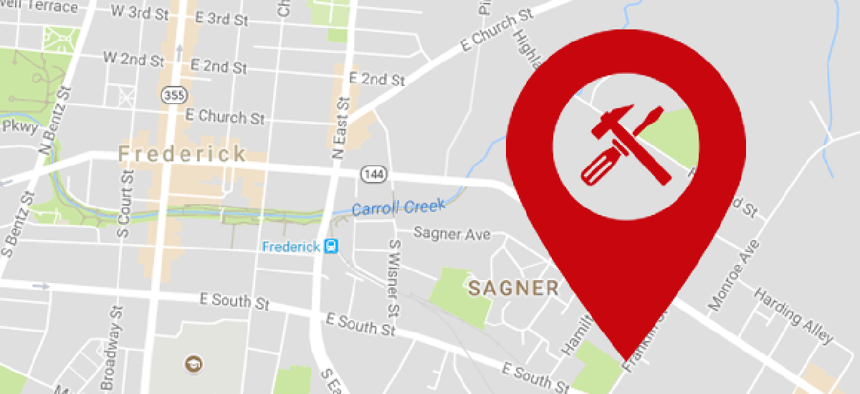City turns mapping services into digital do-it-yourself


Connecting state and local government leaders
Frederick, Md., now has a self-service option for consumers and government users who need GIS data.
Frederick, Md., has made the process of getting geographic information system data about the city into a digital do-it-yourself service for consumers and government users.
Officials launched MapFrederick.city about a month ago. A finalist in this year’s Amazon Web Services’ City on a Cloud Innovation Challenge, the cloud-based website changed delivering GIS data to users from a manual process for city workers into self service.
It used to take staff time to get data to people who wanted, for example, zoning data for a project, said Matthew Bowman, the city’s technology manager. “At that point, we'd do our usual deal, our usual export for citizens to a shapefile or feature class, depending on what they want, and provide it to them via an FTP site or whatever media they’d like.”
Now, however, users can go to the site, where they’re greeted with a Google map and a black box that they can manipulate to adjust the size of the area they want to see. They can zoom in and out to get as much detail as they need. Once they have the region they want, they can click “Filter” at the bottom of the page. A box pops up inviting users to select the data to be exported, such as aerial imagery or details on utilities locations, subdivisions, sewers, improvement plans and plats.
Next, users choose the format in which they want the data -- JSON, KMX or image -- and click “Export.” Another browser window opens with the information requested.
The website's data is updated automatically as the staff makes internal updates. For instance, when parcels subdivide and a new community comes in and is platted, the information is updated. “Once those changes are made, they are seen by the service,” Bowman said.
The GIS Department typically gets one to two requests per week for GIS data, he said, and it can take 15 to 30 minutes for staff members to pull a response together, although it could take awhile for them to get to the query. “It’s not a huge difference, but every little thing helps,” Bowman said of the time savings.
Another benefit is that the service cost the city nothing to set up. It came about through a partnership with Frederick Meetup Groups, which include Python Frederick, Frederick Linux User Group, Frederick Startup Community and Frederick WebTech.
“We gave them the ins and outs on the services that are used in SpiresGIS [the city's GIS system] and how they could be more easily consumed by local people and professionals as well,” Bowman said. SpiresGIS provides interactive mapping applications for use by citizens and government employees that were developed using Esri’s JavaScript application programming interface and ArcServer. Those applications let users search for traffic count information, road closures and historic properties.
Because the service is so new, Bowman said he hasn’t gotten much feedback on it yet. Right now, the focus is on getting the word out about its availability.
NEXT STORY: 4 steps to public-sector cloud migration




